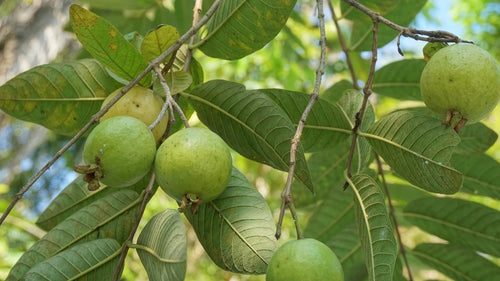40 Years Strong: Planting Trees, Growing Memories in Agroforests
To commemorate the milestone of their 40th school reunion, the IES '84 alumni of the Indian Education Society (IES), Dadar, Mumbai, embarked on a mean Read more
Plantation Site Gallery
Project Update 3
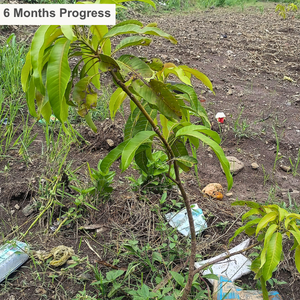
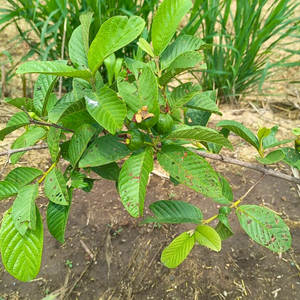

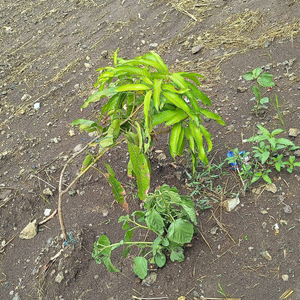
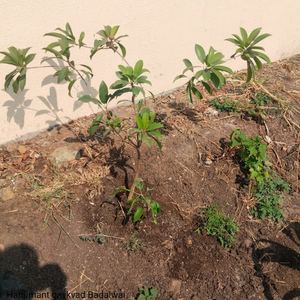
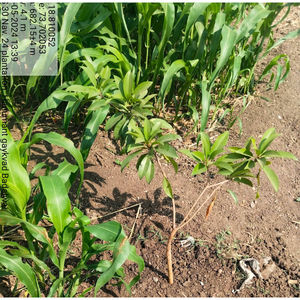
Project Update 2
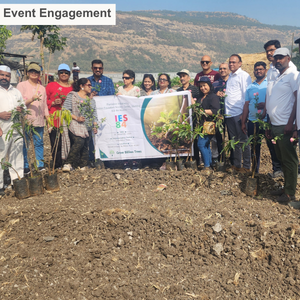
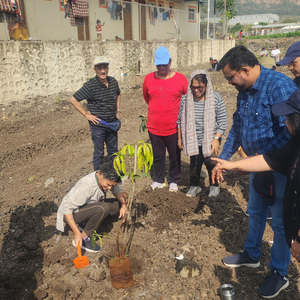
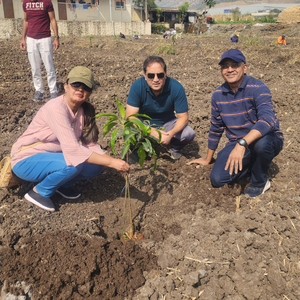
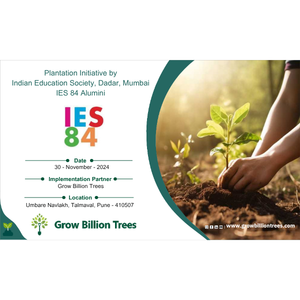
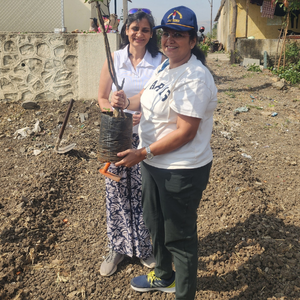
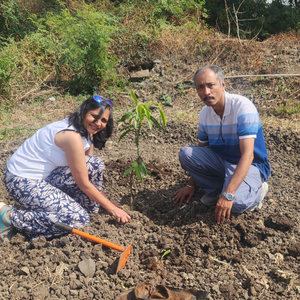


Project Update 1
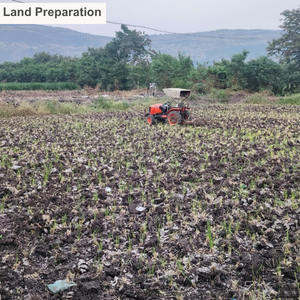
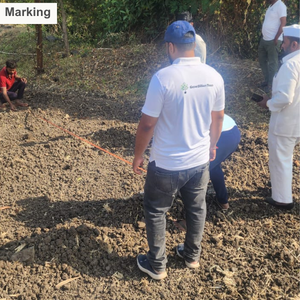
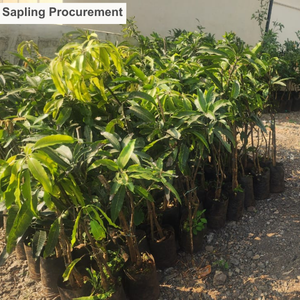
Digital Forest
Forest with 146 Trees planned
Want to plant your tree now?
Plant a Tree @ 299Trees Planted
40 Years Strong: Planting Trees, Growing Memories in Agroforests
Tree Plantation Date
30th November 2024
Plantation Location
Umbare Navalakh, Mawal Taluka, Pune, Maharashtra 410507
Trees Planted
Total Count: 146 Trees
Species Name: Kesar Mango, Guava, Sapodilla
Forest Type: Agroforest
The agroforest tree plantation initiative by the IES '84 alumni of the Indian Education Society, Dadar, Mumbai, is a remarkable and heartfelt endeavor undertaken to commemorate their 40th school reunion. Rooted in the agroforest concept, the initiative focuses on planting trees alongside crops in a sustainable, integrated farming system. This approach not only promotes environmental stewardship but also supports the local farming community by enhancing soil fertility, improving water retention, and increasing biodiversity. Each tree planted by the alumni symbolizes their deep gratitude for the education they received, while also contributing to the long-term health of the environment and supporting sustainable agricultural practices. By adopting the agroforestry model, the alumni help create a harmonious balance between agriculture and nature, benefiting both the land and the local farmers who rely on it for their livelihoods. This initiative highlights the alumni’s commitment to conscious living, environmental responsibility, and giving back to the community, leaving a lasting legacy of green growth and sustainable farming practices that will positively impact future generations.
Advantages Of Agroforest
Enhanced Biodiversity
Agroforestry promotes a diverse range of plants and animals, creating a balanced ecosystem. By integrating trees with crops and livestock, agroforestry systems can increase species richness, which helps stabilize the ecosystem and can lead to improved pest control, pollination, and overall resilience against diseases.
Soil Health Improvement
The incorporation of trees in agricultural landscapes helps improve soil quality. Tree roots stabilize the soil, preventing erosion, while leaf litter and organic matter enrich the soil with nutrients. Additionally, certain tree species can enhance soil fertility by fixing nitrogen or increasing microbial activity, leading to healthier crops and sustainable land management.Carbon Sequestration
Agroforestry plays a crucial role in mitigating climate change by sequestering carbon dioxide from the atmosphere. Trees absorb CO2 as they grow, storing carbon in their biomass and the soil. This dual benefit not only contributes to climate change mitigation but also supports the global effort to reduce greenhouse gas emissions.Water Conservation
Agroforestry systems improve water retention in the soil and can enhance groundwater recharge. Tree canopies reduce water evaporation and help maintain moisture levels, while deep-rooted trees can access water from lower soil layers, making it available to surrounding crops. This leads to more efficient water use and better resilience during droughts.Increased Crop Yields
By creating a more favorable microclimate and improving soil fertility, agroforestry can lead to increased agricultural productivity. The shade provided by trees can protect crops from extreme weather conditions, reducing stress during hot periods and promoting more stable yields across seasons.Diversified Income Streams
Agroforestry systems allow farmers to diversify their income by producing multiple products, such as fruits, nuts, timber, and medicinal plants alongside traditional crops. This diversification can reduce economic risks, improve food security, and provide farmers with more opportunities for revenue generation.Sustainable Land Use
By integrating trees and shrubs into agricultural systems, agroforestry promotes sustainable land use practices. It minimizes the need for chemical fertilizers and pesticides, reducing environmental pollution and enhancing ecosystem health. This sustainable approach can lead to long-term productivity and the conservation of natural resources.Climate Resilience
Agroforestry enhances the resilience of agricultural systems to climate change by improving ecosystem stability and adaptability. The biodiversity fostered within these systems can help crops withstand pests, diseases, and extreme weather events, ensuring food security in changing climatic conditions.Social and Cultural Benefits
Agroforestry can strengthen community ties and cultural practices. It encourages cooperation among farmers, promotes traditional knowledge of land management, and provides spaces for cultural activities and community gatherings, fostering social cohesion and shared values around environmental stewardship.Wildlife Habitat Preservation
Agroforestry provides essential habitats for various species of wildlife. By maintaining tree cover in agricultural landscapes, these systems support wildlife populations, enhance ecosystem services such as pollination, and promote biodiversity conservation, contributing to the overall health of the environment.
Activities During Tree Plantation
During the tree plantation initiative organized on behalf of the IES '84 batch alumni of the Indian Education Society, Dadar, Mumbai, all activities were expertly carried out by farmers to ensure the effective implementation of the agroforest concept. The process began with site preparation, including clearing and enriching the soil to create an ideal environment for planting. Farmers carefully planted the selected native tree species alongside compatible crops to promote biodiversity and sustainable agricultural practices. They ensured proper spacing and alignment to optimize growth and compatibility between trees and crops. After planting, the farmers undertook mulching, watering, and soil stabilization efforts to secure the saplings. They also implemented protective measures to shield the young trees from grazing or external harm. This collaborative effort not only adhered to the principles of agroforestry but also symbolized the alumni's support for local farmers while promoting environmental sustainability.
Tree Plantation Purpose
SDGs Achieved Through Agroforestry
1. SDG 2: Zero Hunger
Agroforestry enhances food security by integrating trees with crops and livestock, which can improve agricultural productivity. The initiative supports sustainable agricultural practices that can lead to higher yields and diversified food sources, thereby reducing hunger in local communities. Additionally, trees can provide fruits, nuts, and other products that contribute to nutrition and income for families, supporting the goal of ending hunger and ensuring access to safe, nutritious food year-round.2. SDG 4: Quality Education
The initiative serves as an educational platform for participants, promoting awareness of sustainable practices and the importance of trees in agroecosystems. It provides a hands-on learning experience that emphasizes environmental stewardship and encourages alumni to share this knowledge with their communities. This aligns with the goal of ensuring inclusive and equitable quality education and promoting lifelong learning opportunities, highlighting the role of education in achieving sustainable development.3. SDG 6: Clean Water and Sanitation
The tree plantation initiative contributes to water conservation and the enhancement of water quality. Trees play a vital role in maintaining the hydrological cycle by improving soil structure and reducing runoff, which helps to recharge groundwater supplies and maintain clean water sources. This aligns with the goal of ensuring availability and sustainable management of water and sanitation for all. Planting trees also helps prevent soil erosion, which can lead to sedimentation in water bodies, thus improving overall water quality.4. SDG 8: Decent Work and Economic Growth
By promoting agroforestry practices, the initiative supports economic growth through the diversification of income sources for local farmers and communities. Trees provide various products that can be marketed, contributing to local economies and creating job opportunities in sustainable agriculture and forestry. This supports the goal of promoting sustained, inclusive, and sustainable economic growth, full and productive employment, and decent work for all.5. SDG 11: Sustainable Cities and Communities
The agroforestry initiative contributes to creating more sustainable urban environments by increasing green spaces, which improve air quality, reduce urban heat, and enhance residents' quality of life. Trees planted during the reunion can provide shade, beauty, and recreational opportunities, thus supporting the goal of making cities inclusive, safe, resilient, and sustainable. This initiative can inspire similar projects in urban settings, encouraging community involvement in sustainability efforts.6. SDG 13: Climate Action
The tree plantation initiative significantly contributes to climate action by sequestering carbon dioxide from the atmosphere. As trees absorb CO2 during photosynthesis, they help mitigate climate change effects. This is particularly important in an era of rising greenhouse gas emissions, as every tree planted contributes to a reduction in the overall carbon footprint. The initiative raises awareness among alumni and the community about the importance of addressing climate change through active participation in sustainable practices.7. SDG 15: Life on Land
By planting trees as part of an agroforestry system, the initiative promotes the restoration of degraded land and enhances biodiversity. Trees provide habitats for various species, supporting wildlife and preserving ecosystems. This aligns with the goal of sustainably managing forests, combating desertification, halting and reversing land degradation, and halting biodiversity loss. The diverse flora and fauna fostered in agroforestry systems can contribute to healthier ecosystems and increased resilience to environmental changes.8. SDG 17: Partnerships for the Goals
The partnership with Grow Billion Trees has significantly advanced the achievement of SDG, Partnerships for the Goals by leveraging collective resources, expertise, and community engagement to promote large-scale reforestation efforts. Through this collaboration, the school's 40th reunion tree plantation initiative gained valuable insights into effective agroforestry practices and access to a wider network of environmental advocates and supporters. Grow Billion Trees provided guidance on selecting native tree species, organizing planting activities, and raising awareness about the importance of sustainability, thereby enhancing the overall impact of the initiative. This collaboration not only facilitated the successful execution of the tree planting project but also fostered a sense of community and shared responsibility among participants, highlighting the power of partnerships in addressing environmental challenges and driving positive change for future.
ESGs Achieved Through Agroforestry
Environmental (E)
The tree plantation initiative within the agroforest concept significantly contributes to environmental sustainability by enhancing biodiversity and promoting ecosystem health. By planting a diverse range of native trees alongside crops, the initiative helps restore degraded land, improve soil fertility, and reduce erosion. This integration of trees into agricultural systems fosters a balanced ecosystem that supports wildlife habitats and enhances carbon sequestration, playing a crucial role in mitigating climate change. Additionally, the trees improve water retention in the soil and contribute to cleaner water resources, thus promoting overall environmental quality.Social (S)
On the social front, the tree plantation initiative fosters community engagement and strengthens relationships among alumni, as it provides a platform for collaboration and shared purpose. Participants work together in a hands-on environment, which encourages teamwork and builds camaraderie while instilling a sense of environmental stewardship. The initiative also serves an educational purpose, raising awareness about sustainable practices and the importance of agroforestry among participants and the wider community. This social impact extends beyond the reunion, as the trees planted contribute to the well-being of local communities by providing resources such as fruits and nuts, enhancing food security, and improving quality of life.Governance (G)
From a governance perspective, the tree plantation initiative underscores the importance of responsible and transparent management of environmental projects. Partnering with organizations like Grow Billion Trees ensures that best practices in sustainability and reforestation are followed, promoting accountability in the execution of the project. The initiative reflects a commitment to ethical practices, aligning with corporate social responsibility and community engagement principles. By fostering partnerships and encouraging alumni to take active roles in environmental stewardship, the initiative sets a precedent for future projects, emphasizing the need for collaborative governance in achieving sustainable development goals.
Commitment by Grow Billion Trees
Grow Billion Trees is committed to driving sustainable plantation efforts, ensuring every initiative aligns with key environmental objectives and promotes long-term ecological balance. They focus on selecting native tree species that are well-adapted to local ecosystems, ensuring a higher survival rate and stronger environmental impact.
To maintain plant health and longevity, Grow Billion Trees emphasizes continuous maintenance and regular monitoring of the plantations. This approach helps ensure that each tree thrives, contributing effectively to both biodiversity and climate resilience.
Transparency is a core principle in their operations. Clients receive comprehensive reports, including geo-tagging of planted trees, survival rate updates, and ongoing progress reports. This level of openness allows clients to track the direct impact of their contributions, reinforcing trust and accountability.
Through their dedication to sustainable practices, Grow Billion Trees ensures that every plantation project leaves a lasting positive footprint on both the environment and the local communities it serves.
Summary
To celebrate the 40th anniversary of their school reunion, the IES '84 alumni from the Indian Education Society, Dadar, Mumbai, launched a tree plantation initiative rooted in the agroforest concept. This meaningful initiative involved planting trees alongside crops, fostering a sustainable agricultural ecosystem that enhances soil health, promotes biodiversity, and supports local farmers. Each tree planted represents the alumni's gratitude for their education and their commitment to environmental responsibility. By integrating trees with agricultural practices, the initiative also supports local farmers, providing them with a sustainable source of income and helping to sustain their livelihoods. This tree plantation effort not only marks a significant milestone in the alumni’s journey but also leaves a lasting legacy of sustainability, environmental consciousness, and community support for future generations.
Trees for Corporates
Trending
Most Popular
1. Tree Plantation Benefits
Tree plantation offers a wealth of benefits, and let's face it, who wouldn’t want to plant a tree and feel like a superhero? First off, trees are incredible at filtering the air we breathe. They absorb carbon dioxide and release oxygen, which means you get to breathe easier (literally!). But wait, that’s not all—trees are also fantastic at reducing soil erosion and promoting water retention. So, not only do they help with climate change, but they also help keep our earth from washing away. And let’s not forget the fact that trees give us shade on a hot day—hello, free AC! Whether it’s boosting biodiversity, promoting cleaner air, or providing shade, tree plantation is a win-win, especially when done as part of the agroforest concept. You plant a tree, and the planet plants a kiss on your forehead.
2. Individual Contribution to Agroforestry
your one tree could be part of a massive chain reaction that changes the future of farming. Plus, you’ll get to brag about it to your friends!
3. Agroforest Sustainability
Agroforest sustainability is like the ultimate green smoothie for the planet—packed with all the goodness you need to make it thrive! In this system, trees and crops work together in perfect harmony, supporting each other in ways you can’t even imagine. Trees provide shade, improve water retention, and enhance soil fertility, while crops thrive beneath the leafy canopy. The result? A sustainable farming practice that benefits the environment, the farmer, and—let’s be real—the future of humanity. Forget the conventional mono-cropping systems that strip the land of nutrients. Agroforestry offers a future-proof solution that nurtures the land and its inhabitants. The best part? You don’t need a Ph.D. in botany to get involved—just a love for trees and a little commitment to sustainability!
4. Agroforestry for Carbon Sequestration
each tree planted is like giving the Earth a little hug. And who doesn’t love hugs?
5. Environmental Impact of Tree Planting
When you plant a tree, you’re not just adding to the greenery—you’re directly benefiting the environment in a thousand ways. Trees act as natural air filters, sucking up carbon dioxide and releasing the oxygen we depend on. They provide habitat for wildlife, help cool the planet, and even play a role in preventing flooding by reducing soil erosion. And let’s not forget the beauty they bring to the landscape! By supporting tree planting efforts, whether individually or in an agroforest setting, you're actively participating in an environmental revolution. Want to feel like a hero today? Go plant a tree!
6. Biodiversity in Agroforestry
Agroforestry doesn’t just focus on planting trees; it’s about creating a biodiverse environment that supports both agriculture and nature. By incorporating various tree species alongside crops, farmers and individuals alike contribute to a thriving ecosystem filled with different plants, animals, and insects. Biodiversity in agroforestry helps create a natural balance where pests are controlled, pollination is optimized, and nutrient cycling occurs. Trees provide food and shelter for wildlife, while crops benefit from the natural services provided by this rich environment. So, when you plant a tree in an agroforest, you're not just creating a greener space—you're building a mini wildlife sanctuary. It's like running your own little eco-resort, and everyone’s invited!
7. Agroforest for Soil Health
trees feed the soil, and the soil feeds your crops. So, if you're looking to give Mother Earth a little TLC, agroforestry is the way to go—your soil will thank you, and your crops will thrive!
8. Social Benefits of Agroforestry
Agroforestry is more than just an environmentally-friendly practice; it’s also a powerful tool for uplifting communities. By promoting sustainable farming practices, agroforestry helps create long-term income sources for farmers, providing them with diverse products such as fruits, timber, and medicinal plants. Additionally, the practice can lead to job creation in rural areas, from tree planting to maintenance and harvest. For individuals looking to make a difference, participating in agroforestry not only contributes to environmental health but also supports social well-being by empowering local communities. It’s a sustainable win-win that keeps giving back, and who doesn’t want to be part of that?
FAQ
What is agroforestry?
Agroforestry is a land-use system where trees and shrubs are integrated with crops or livestock to create a sustainable, productive ecosystem. This approach enhances biodiversity, improves soil health, and helps manage water resources. For individuals, adopting agroforestry practices can contribute to environmental conservation and support local farmers by providing them with sustainable income sources. It’s an eco-friendly method that balances agricultural productivity and environmental health, offering long-term benefits to both people and the planet.
Why should individuals participate in tree plantation?
Participating in tree plantation is an easy and impactful way for individuals to contribute to the environment. Trees absorb carbon dioxide, release oxygen, and provide shade, helping to reduce the effects of climate change. Planting trees also boosts biodiversity, improves soil health, and helps conserve water. It’s a simple yet powerful act that promotes environmental sustainability, benefiting not just individuals, but entire communities and ecosystems.
What are the benefits of tree plantation for individuals?
Tree plantation offers numerous benefits for individuals, from improving air quality to providing a sense of personal fulfillment. Trees help mitigate climate change by absorbing carbon dioxide, while also improving local microclimates by providing shade. For individuals in urban areas, planting trees can enhance their immediate environment by cooling down streets and reducing pollution. Additionally, trees help conserve soil and water, making them a crucial part of sustainable living.
How does tree plantation contribute to carbon sequestration?
Tree plantation plays a key role in carbon sequestration, as trees absorb carbon dioxide during photosynthesis and store it in their roots, trunks, and branches. By increasing the number of trees, individuals contribute to offsetting greenhouse gas emissions, helping mitigate climate change. Agroforestry further enhances this process by planting trees alongside crops, which not only captures more carbon but also boosts soil fertility and promotes biodiversity. Every tree planted is a step toward a more sustainable and eco-friendly future.
What is the role of agroforestry in enhancing soil health?
Agroforestry helps improve soil health by reducing erosion and increasing soil fertility. Tree roots anchor the soil, preventing it from being washed away during heavy rains. Additionally, fallen leaves and organic matter from trees enrich the soil, providing nutrients for crops. This sustainable system promotes better water retention and prevents soil degradation. For individuals adopting agroforestry practices, this means healthier crops and long-term productivity in their farming or gardening efforts.
How does agroforestry benefit local farmers?
Agroforestry benefits local farmers by providing diverse income sources. Farmers can grow crops, fruits, or timber alongside trees, which increases biodiversity and reduces the risk of crop failure. The integration of trees improves soil fertility and water management, leading to healthier crops. Additionally, agroforestry offers a buffer against market fluctuations, as farmers can sell timber or fruit while still cultivating their land. This system fosters long-term sustainability for farming communities, enhancing food security and livelihoods.
What are the environmental benefits of agroforestry for individuals?
Agroforestry offers several environmental benefits, making it a great practice for individuals committed to sustainability. By planting trees alongside crops, it enhances biodiversity, improves soil health, and helps conserve water. It also contributes to climate change mitigation by sequestering carbon. For individuals, adopting agroforestry practices helps reduce their carbon footprint, promote environmental stewardship, and support eco-friendly farming practices that benefit both nature and local communities.
How can individuals start agroforestry practices on their land?
Starting agroforestry practices involves selecting the right trees and crops that complement each other. Individuals should research local tree species that suit their climate and soil conditions. Begin by planting trees at appropriate intervals alongside your crops to ensure they don’t compete for resources. Over time, agroforestry enhances soil fertility and biodiversity. Consulting with agricultural experts or local farmers can also help guide you in establishing an agroforestry system that’s both environmentally sustainable and economically beneficial.
What are the social benefits of tree plantation?
Tree plantation has numerous social benefits, particularly in creating stronger, greener communities. Trees provide shade, improve air quality, and beautify public spaces, making neighborhoods more livable. In rural areas, agroforestry practices can support local farmers, offering them additional income from timber or fruits. For individuals, participating in tree plantation fosters a sense of community involvement and responsibility. It’s an act that not only benefits the environment but also strengthens the social fabric by bringing people together for a common cause.
How can tree plantation initiatives help combat climate change in India?
Tree plantation initiatives are a crucial strategy in combating climate change in India. By planting more trees, carbon dioxide is absorbed from the atmosphere, helping to reduce the greenhouse gases that contribute to global warming. Agroforestry practices take this further by integrating trees with crops, increasing carbon sequestration while improving soil health and water retention. For individuals, supporting or participating in these initiatives can significantly impact local ecosystems and contribute to India's overall climate goals, paving the way for a greener, more sustainable future.
- Choosing a selection results in a full page refresh.
- Opens in a new window.


